Another try at the whole Tandy thing
Tags: computer tandy tandy1000 tandy1000ex pickups
Clearly, I haven’t suffered enough pain from the Tandy 1000SX, so I made a choice to re-enlist. This time, it’s a completely untested 1000EX that I found as part of an auction.
In case you’re as confused by the Tandy naming scheme as I was (I’m still a little confused), the EX is an all-in-one machine of similar proportions and heft to an Amiga 500. It’s about the same machine specs-wise as the 1000SX, but obviously less expandable.
What does the E stand for? My best guess is “education,” but you can’t fit the TrackStar Apple II emulator card into these things, so perhaps it just sounded good at the time.
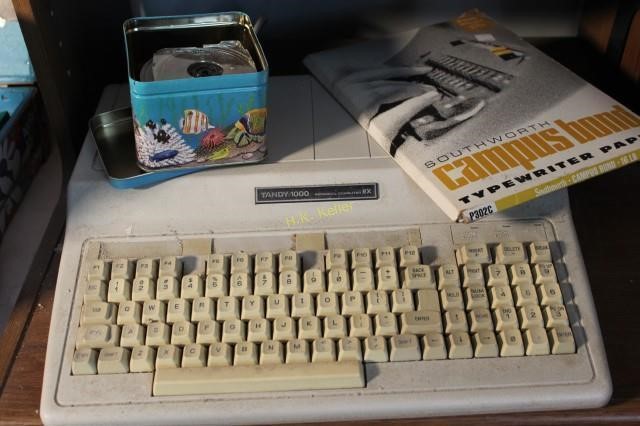
I stumbled upon this machine by accident. When I got an email from a local auction, I found out that their backend server was shared by a whole bunch of similar auctions. With a quick search, I found this dude in the middle of a home-office cleanout in Lancaster PA.
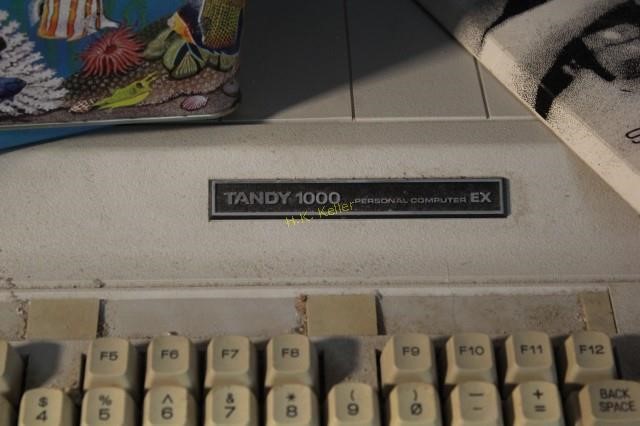
The pictures weren’t great (and it was listed as a “Tandy typewriter,”) but they were good enough to figure out what this computer was. This is a Tandy 1000EX, which is pretty much the same machine as the 1000SX, but in an all-in-one, “Amiga 500-style” case. It even has ISA expansion slots, though they’re awkward right-angle connectors. Lucky for me, there are adapters and enough height to stick in an XT-CF-Lite or something similar.
Cleanup
From the auction pictures alone, I was expecting a fairly dirty machine that would need some serious scrubbing before any test.
Besides the keyboard, though, all it really needed was a few Lysol wipes. Most of the dirt came up immediately, though the rust stains on the bottom of the machine will probably be woven into the plastic forever.
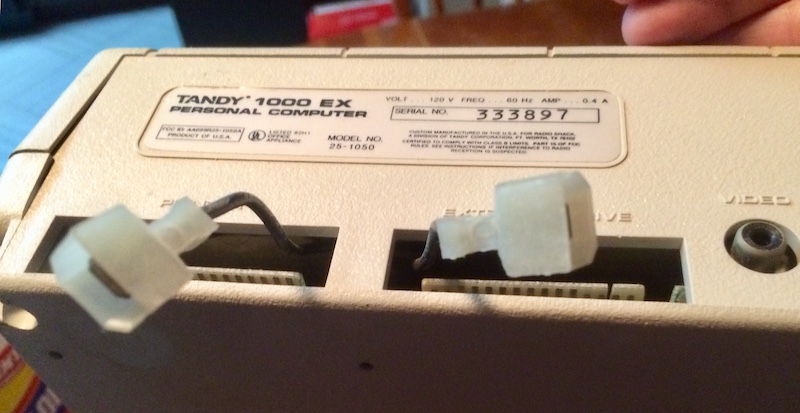
While cleaning, I noticed these weird connectors coming out from the printer and external floppy ports. After puzzling over what they are, I was told they were intended to provide an external ground wire to peripherals.
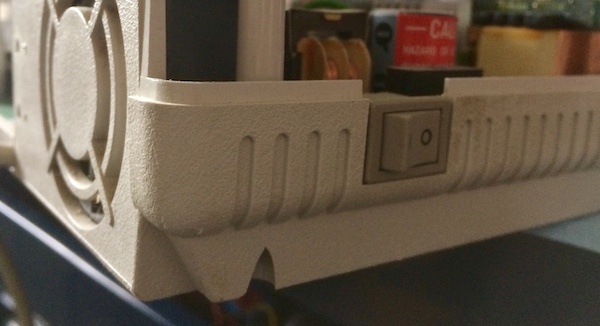
There’s a little chip in the corner of the case. Since I didn’t find that bit in the box that it got shipped with, I have to assume the damage happened years ago.
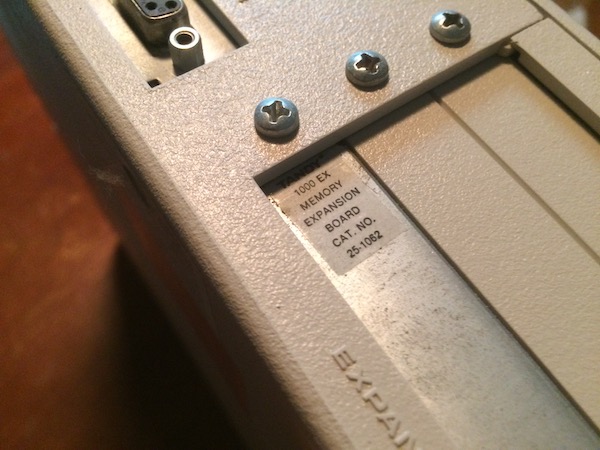
I was happy to find out that this machine had a memory expansion. These memory cards are not uncommon, but they are specialized to the machine (Tandy collapsed the ISA edge connector into a more compact pin header, which they called a “plus connector”). There’s a great VCF thread going right now where some very dedicated smart people are trying to build their own version of the memory expansion board.
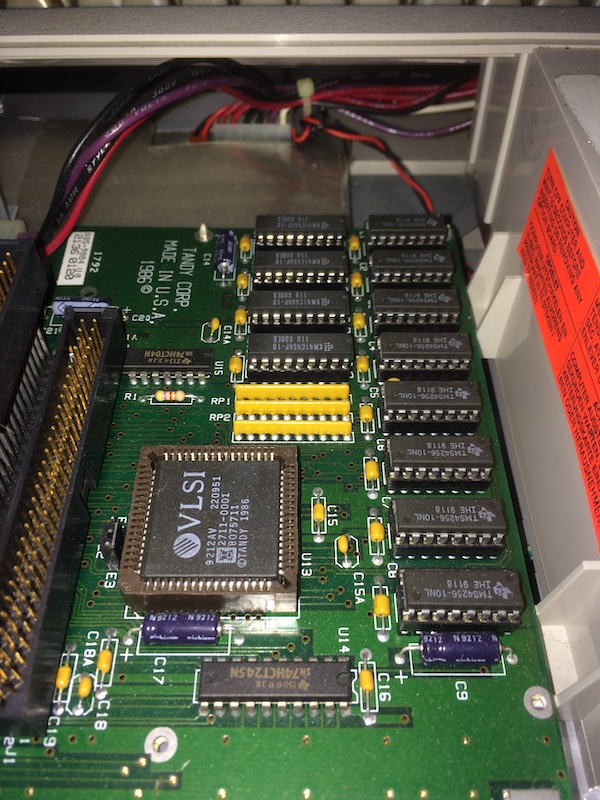
The 1000EX and 1000HX have this great pop-out plastic door that lets you see into the machine (said memory expansion card is at the bottom here - notice the custom VLSI chip that represents most of the challenge when it comes to cloning the board). I think it’s so you can replace cards without having to take the case off, but for now it gives me a great peek into how clean the inside of the computer is. It’s nice enough for me!
What isn’t nice is this keyboard. At first, I figured this might just be dust and popcorn-ceiling debris, but I’ve owned enough cats to know that I’m looking at cat hair and kitty litter. I assume the previous owner had a cat who liked to sleep on this nice warm Tandy. It must have been irresistable.
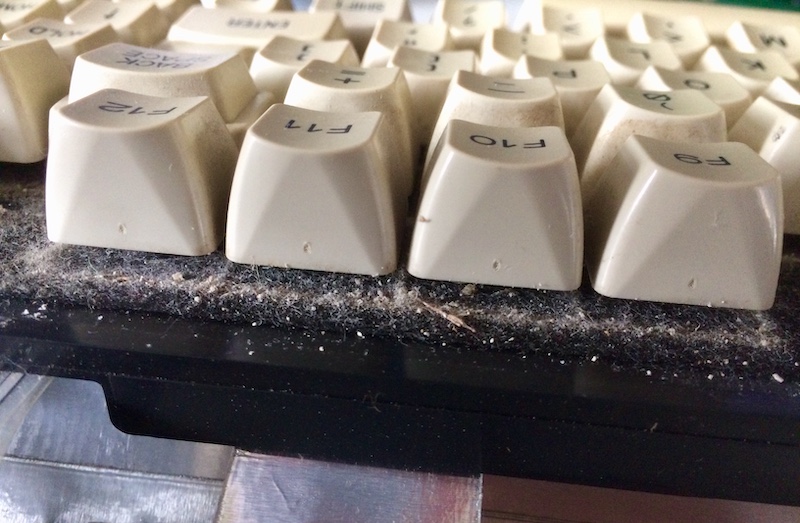
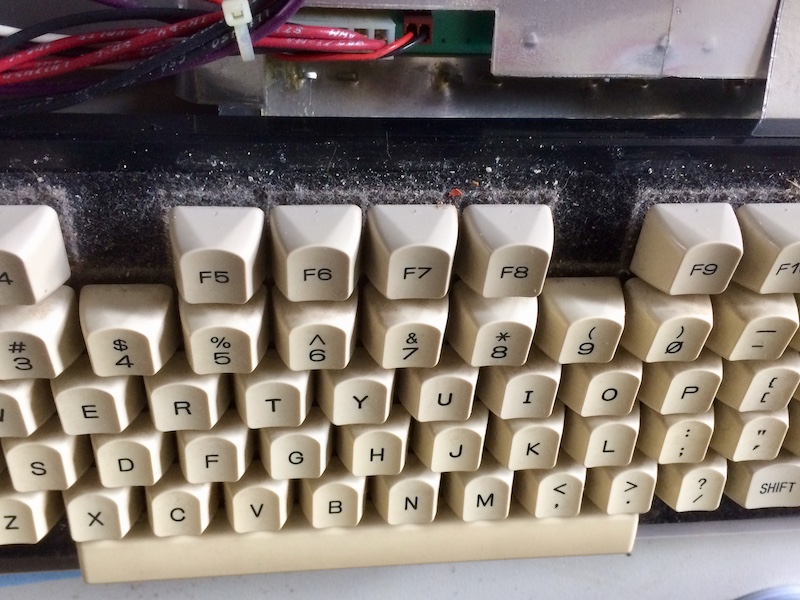
Most of it came off with a can of compressed air. The rest will have to wait until I can fully dismantle the keyboard and remove the little fabric sound deadener that has trapped all this hair and dirt.
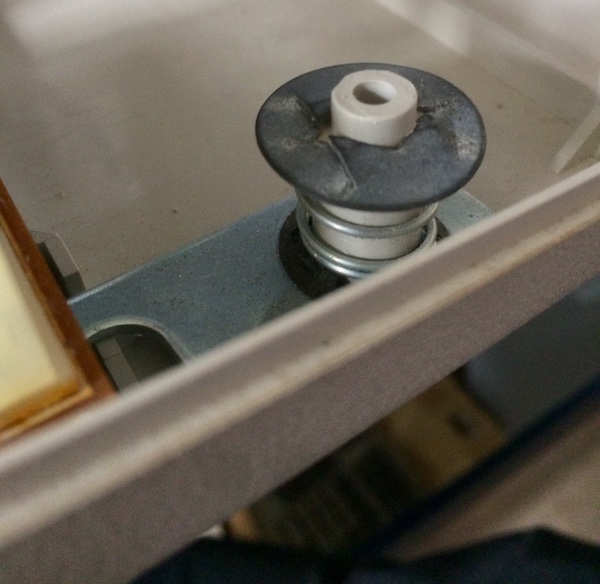
The keyboard had this little spring loaded thing on the side. At first, I thought this might be some kind of dampener for the keyboard, to make it feel real classy when you type on it. However, there isn’t one on the other side, and there’s a weird slot on the side of the machine, almost as if you could…
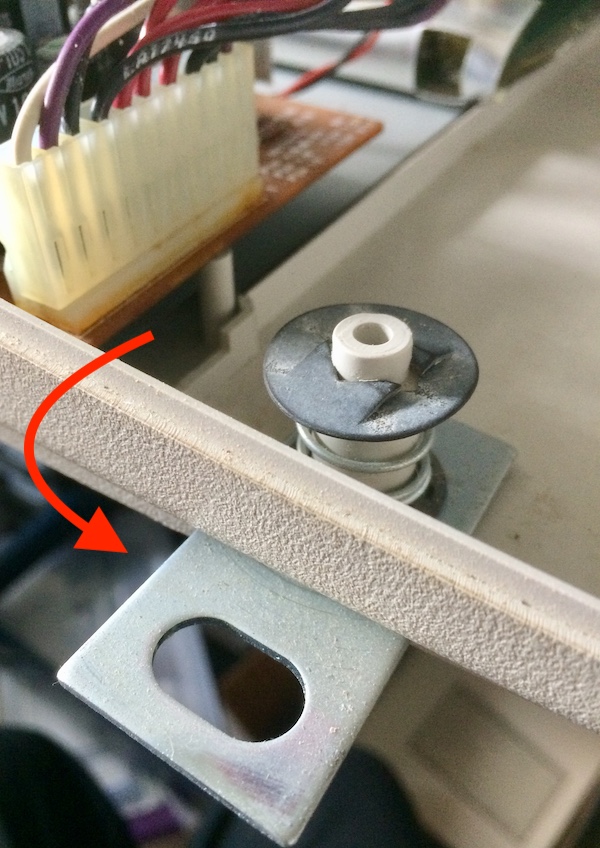
After doing extensive research, this seems to be for a cable lock. At first, I thought it might be to hold onto some “sidecar” peripheral, but you know how 1980s kids liked to steal computers.
Power Thirsty
I’ve learned my lesson from the 1000SX. There’s no way I want a shipping-damaged power supply to endanger this machine’s custom chips as well. The service manual shows that the minimum loads are a little lower than the 1000SX’s stronger power supply:
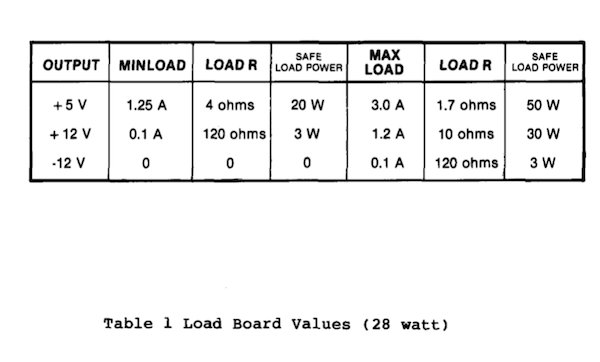
Good thing I already have all the gear! I set up the power supply in a variant of the same arrangement I used on the 1000SX:
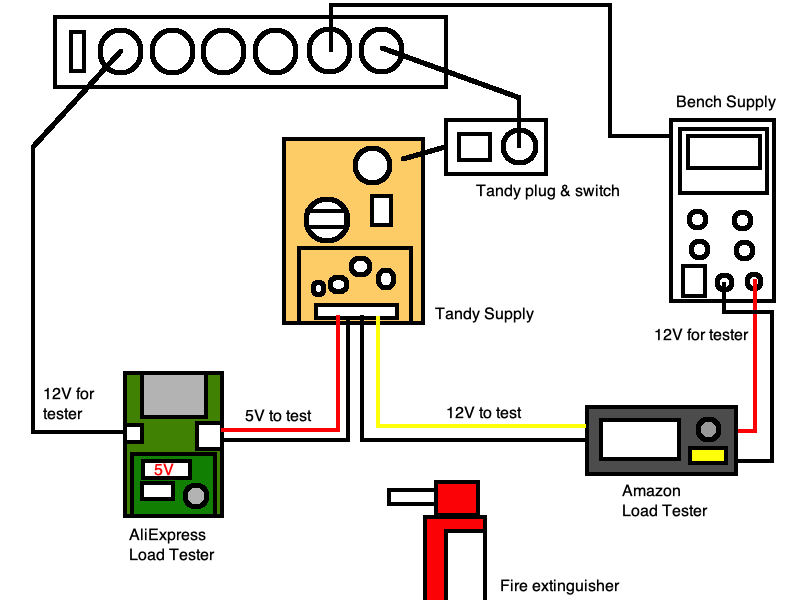
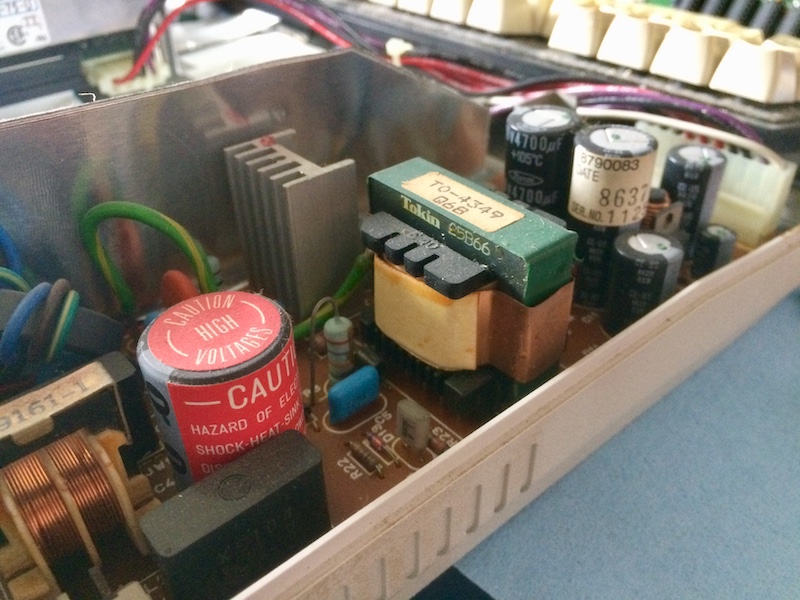
Once the case was removed, I got a good look at the power supply. No obviously bulging caps or burn marks on the board - that’s a good start. The manufacturer is the same as with the 1000SX - Japanese transformer firm Tamradio - so the board is likely going to be very similar.
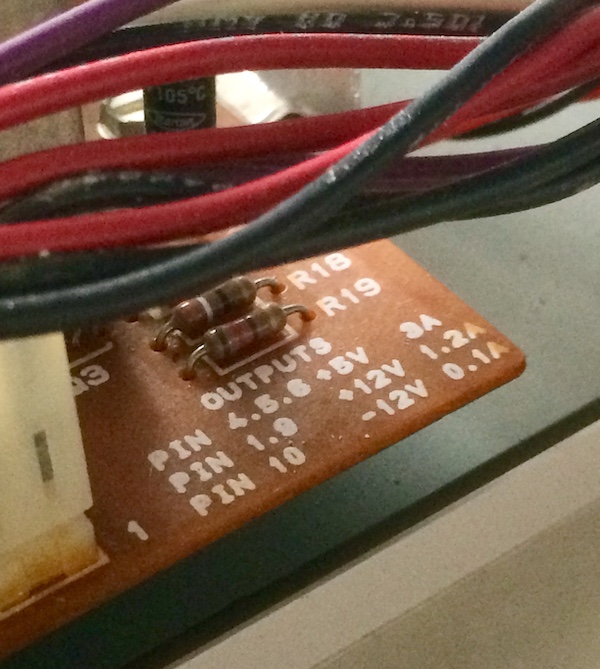
The board is much smaller than the PSU board in the 1000SX, but at least they still took the time to call out which pin is which. Thanks!
Like with the SX and pretty much all 30 year old Molex-style connectors, the main board connector was stuck tight from heat-cycling. With some patient prying with spudger tools and application of precision profanity, it eventually came loose.
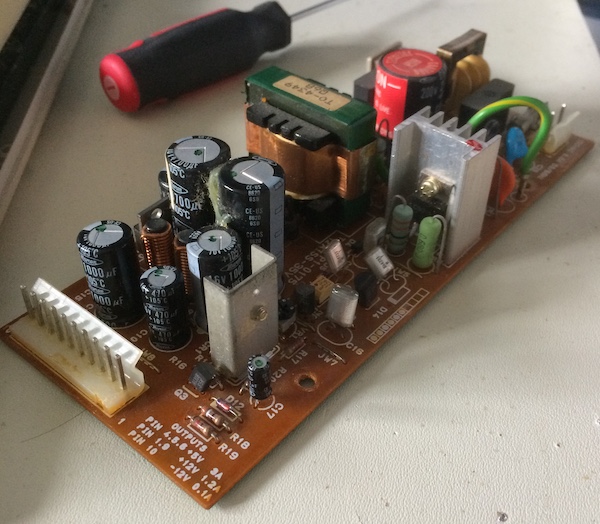
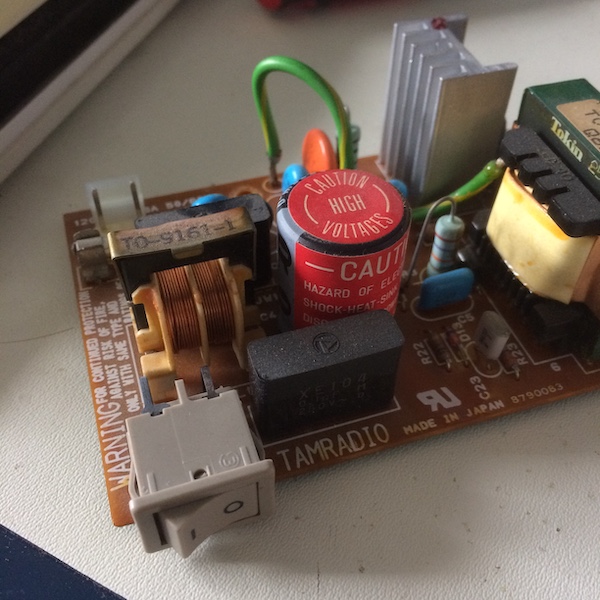
The power supply for this machine is much smaller than the 1000SX. I guess they figured with fewer and shorter slots, nobody is going to cram a power-thirsty ISA card in here and rip a hole in the space-time continuum.
Here’s a cap list, while I’m in here:
| Cap | Voltage | Capacitance | Notes |
|---|---|---|---|
| C10 | 16V | 470µF | |
| C9 | 16V | 1000µF | |
| C12 | 10V | 4700µF | |
| C11 | 10V | 4700µF | |
| C14 | 35V | 300µF | |
| C15 | 25V | 100µF | |
| C13 | 16V | 1000µF | |
| C17 | 50V | 1µF | |
| C4 | 200V | 220µF | Mains cap, BIG |
When looking over the board, I saw these cold-looking solder joints for some big diodes:
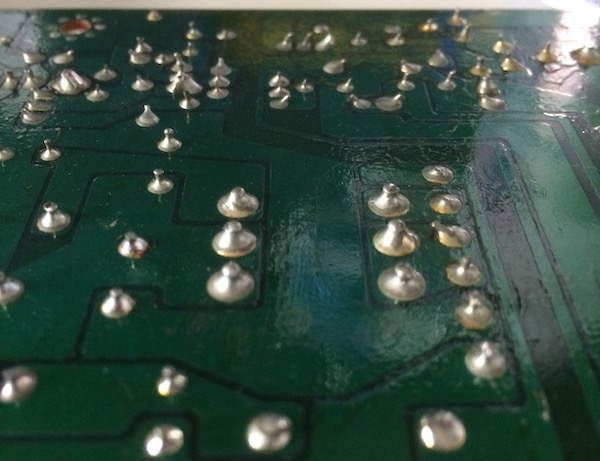
I freshened those joints up, and otherwise the board was fine except for the customary “ocean of flux” that I’ve come to expect.
Throwing The Switch
I’m always a little anxious when the test actually happens. Maybe this will fade with time as I become more experienced, because I was a lot less anxious this time than with the SX supply.
Because the Tandy 1000EX has a hard-wired power cord (a pet peeve of mine), I had to run the board inside the case when I tested it. This meant that the cable arrangement was, well, a little messy:
Everything worked out in the end, with okay but not great voltages at the load:
| Load | 5V rail |
|---|---|
| 1.5A | 4.85V |
| 2.0A | 4.77V |
| Load | 12V rail |
|---|---|
| 0.2A | 11.80V |
| 0.5A | 11.77V |
More importantly, the voltage stayed strong… and none of the capacitors exploded in my face. I let the loads eat for about ten minutes. This probably means the power supply is definitely more solid than the 1000SX, and it’s a lot cheaper nicer for my cheapo Aliexpress load testers to get nuked than more of the Blues.
Contact!
It took me about ten minutes to put the machine back together, and then there was nothing left to do but plug it into a TV and let it rip. The video immediately came up and reported that I had a tasty 640K of RAM, and then the floppy drive looked for a boot disk.
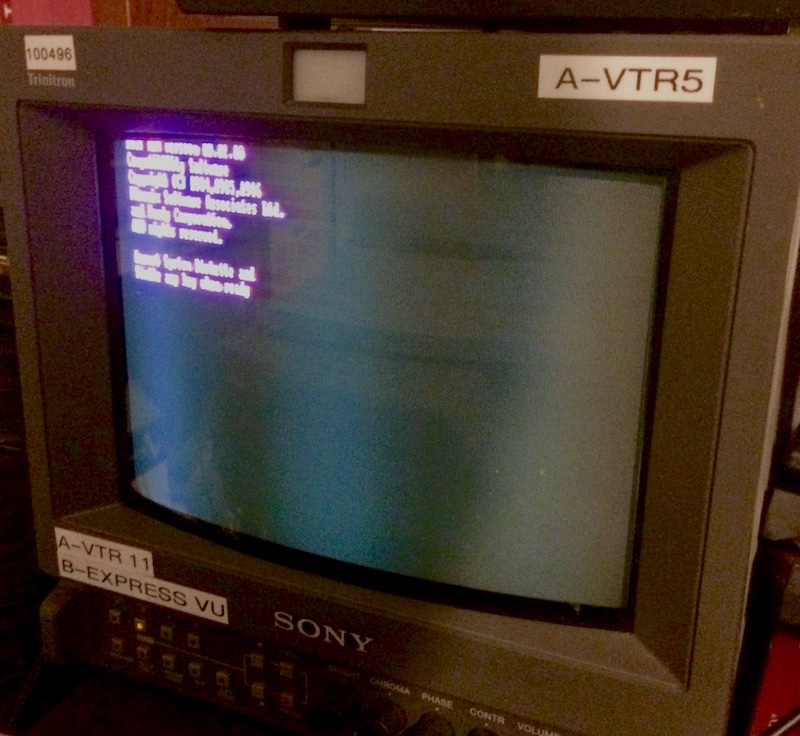
The 1000EX is alive! At least I have one working Tandy 1000 now. I can already tell, however, that composite video isn’t going to be appropriate for long-term work. I guess I need to finally figure out how to use my GBS8200 with CGA!